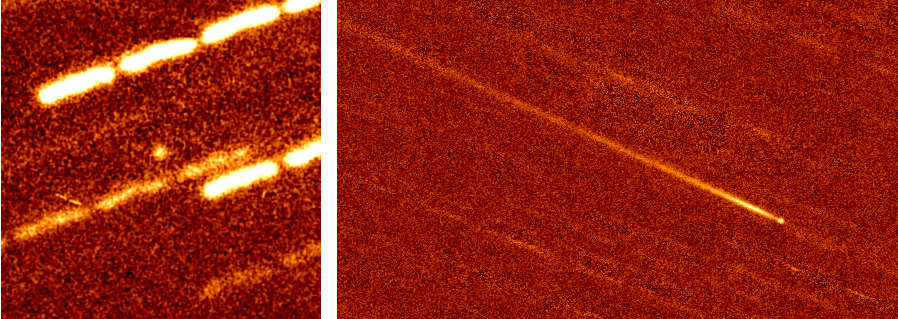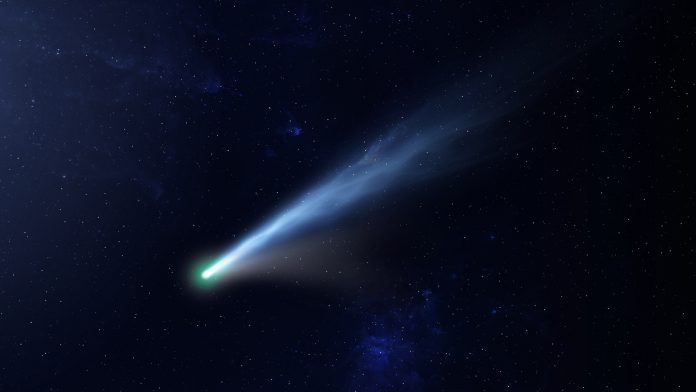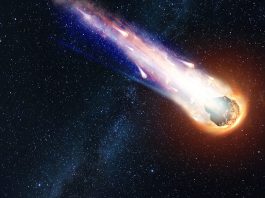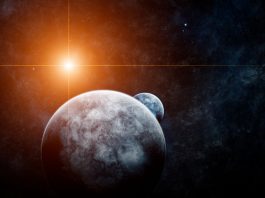A research team from the National Astronomical Observatory of Japan has captured images of a near-Sun comet breaking apart.
Scientists captured images of a near-Sun comet for the first time
The team of astronomers utilised a fleet of world-leading telescopes that were both on the ground and in space to capture images of a periodic rocky near-Sun comet breaking apart. This is the first time scientists have captured images of such a comet disintegrating and the research team noted that this observation could aid in explaining the scarcity of such periodic near-Sun comets.
These results were published in the Astronomical Journal on 14 June 2022.
How are these comets in near-Sun orbits created?
The Solar System has been considered a dangerous place in the scientific community for decades. Textbooks demonstrate figures of celestial bodies circling around the Sun in orderly orbits. However, this is because if an object’s orbit does not fit this pattern, gravitational effects from other objects destabilise the orbit.
Furthermore, one common outcome for such ejected bodies is to become comets in near-Sun orbits where they will eventually plunge into the Sun. Therefore, as these comets pass so close to the Sun, they are difficult to discover and study. Most have been uncovered by mistake in solar telescope observations.
However, even when taking these factors into account, there are considerably fewer near-Sun comets than expected, indicating that something is destroying them before they get a chance to make their fatal final descent into the Sun.

323P/SOHO on its way to the perihelion is seen as a point source in the centre of the left image; after the perihelion, the comet has developed a long narrow tail as seen in the right image.
Photo Credit: Subaru Telescope/CFHT/Man-To Hui/David Tholen.
The orbit of 323P/SOHO
The research team investigated these near-Sun comets breaking apart to gain a deeper understanding of 323P/SOHO. A group of astronomers from the US, Macau, Germany, Taiwan, and Canada observed an elusive near-Sun comet called 323P/SOHO with numerous telescopes including the Subaru Telescope, the Canada France Hawaii Telescope (CFHT), the Gemini North Telescope, Lowell’s Discovery Telescope, and the Hubble Space Telescope.
The orbit of 323P/SOHO was poorly constrained, so researchers were unsure of the optimal observation areas to discover it. However, the wide field of view of the Subaru Telescope permitted them to ‘cast a wide net’ and discover the comet as it approached the Sun. This was the first time 323P/SOHO was captured by a ground-based telescope. Scientists were able to utilise the data to constrain the orbit, as the data revealed where to position the other telescopes and were waiting when 323P/SOHO started to move away from the Sun again.
323P/SOHO surprisingly altered during its close passage near the Sun
Researchers were astounded to discover that 323P/SOHO changed remarkably during its close passage by the Sun. In the Subaru Telescope data, 323P/SOHO was just a dot, but in additional follow-up data, it had a long comet tail of ejected dust. Scientists believe that the intense radiation from the Sun resulted in parts of the comet breaking off due to thermal fracturing, similar to how ice cubes crack when a hot liquid is poured over them. This mass loss mechanism could help explain what happens to near-Sun comets and why there are so few of them left.
However, the team’s results raised more questions than they answered – they discovered that 323P/SOHO rotates rapidly, taking just more than half an hour per revolution and that its colour is unlike anything else in the Solar System. Scientists have noted the necessity of conducting additional observations of other near-Sun comets to see if they also share these traits.
“We could not have made this discovery without observations from the telescopes on Maunakea, made possible by the University of Hawai’i,” concluded Man-To Hui, Assistant Professor from Macau University of Science and Technology. “The observations from the Subaru Telescope were the initiator, shrinking orbit uncertainties and making follow-up observations possible. CFHT provided the best coverage data and Gemini provided the densest data points.”









